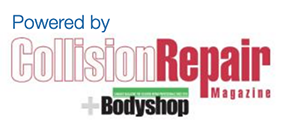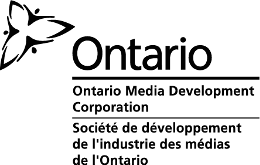Car insurance is a protection you must purchase if you own a car or other vehicle. It protects you in case of an accident. Car insurance may protect you from:
- having to pay to repair your car or other vehicle after an accident
- liability claims if you’re responsible for an accident causing damage
Insurance companies may refer to car insurance as property and casualty insurance. Property and casualty insurance also includes home insurance, business insurance and disaster insurance.
If someone who isn’t on your policy has an accident with your car, your own premiums may increase.
No-Fault Insurance Explained
The term “no-fault insurance” might be misleading, as it does not imply an absence of fault in vehicular incidents. Rather, it delineates the process of claim settlement, wherein you liaise directly with your insurer for any claims, irrespective of who is to blame for the accident. This framework is prevalent across several Canadian provinces, including Ontario, Quebec, Alberta, British Columbia, Nova Scotia, New Brunswick, Newfoundland and Labrador, and PEI. Notably, DCPD is not applicable within British Columbia’s no-fault system, where Basic Vehicle Damage Coverage (BVDC) is in effect, offering up to $200,000 for vehicular damages.
Direct Compensation Property Damage (DCPD) Explained
Following an accident, your insurer’s investigation determines your fault percentage, ranging from 0% to 100%, to ascertain your degree of liability. Being deemed 50% at fault indicates shared responsibility.
Within the no-fault insurance model, DCPD covers your vehicle’s damages in accidents where you are not the liable party, provided another involved vehicle is insured under a motor vehicle liability policy by an insurer recognized in the province of the accident or adheres to DCPD guidelines. This coverage ensures reimbursement for repairs or replacement of your vehicle to facilitate a swift return to normalcy.
DCPD covers the following for non-fault accidents:
- Vehicle damage, including loss of use
- Damage to personal belongings in the vehicle at the accident time, excluding cargo transported for payment (referred to as “contents carried for reward” in your policy)
DCPD is a component of no-fault insurance systems, guaranteeing compensation for your vehicle’s damage in non-fault collisions.
Options for At-Fault Collisions: If you are at fault in a collision, vehicle damage coverage is contingent upon having optional all-perils or collision coverage. Consult with a licensed car insurance broker to ensure adequate coverage for at-fault accidents.
Opting Out of (DCPD) Coverage…be very careful.
(DCPD) coverage, which was previously a compulsory element of no-fault car insurance in Ontario, has seen a shift. As of January 1, 2024, policyholders in Ontario have the freedom to exclude DCPD coverage from their plans at their discretion.
In Ontario, you can withdraw from DCPD coverage by submitting written consent and a signed acknowledgment form, foregoing this protection. Those financing or leasing their vehicles must obtain approval from their financier or lessor before opting out.
Opting out of DCPD means you forfeit the right to claim damages from your insurer, the responsible party, or their insurer after an accident, regardless of fault. Without DCPD, Collision, or All perils coverage, you will bear out-of-pocket costs for post-collision expenses, such as towing, storage, or rental vehicles, which might exceed any premium savings.
Opting out has very serious repercussions. Basically even if you are not at fault you have no coverage to get your car repaired.
Car insurance policy coverage
Coverage is the maximum amount of money your insurance company will pay you if you make a claim. Ask your insurance company what coverage your policy provides.
Who your car insurance policy covers
If you get into a car accident, your insurance may cover:
- the driver
- all passengers
- other people involved in the accident
In some provinces, injured passengers or other people involved in the accident must make a claim with their own insurance first.
If you have additional drivers, you must list their names in your insurance policy. Additional drivers include other drivers in your household who may use your car. For example, to drive to school or work. If they have a poor driving record, your premiums may increase.
Liability insurance
Liability insurance covers losses, such as injury or death that your vehicle causes to other people. It also covers damage your vehicle causes to other vehicles. You may need to pay the balance of the settlement yourself. For example, if the cost of the loss or damage is higher than your liability limit.
Liability insurance doesn’t cover the cost of repairs to your own vehicle. You may need to consider additional insurance to cover these costs.
Accident benefits
Accident benefits cover the cost of your own medical expenses and loss of income following a car accident.
Quebec residents are covered for injury or death by Quebec’s public automobile insurance plan. Premiums are part of your driver’s licence registration.
Additional insurance coverage
Your car insurance policy may also provide you with additional benefits.
Collision insurance
Collision insurance covers the cost of repairing or replacing your car if you hit another car or object. Insurance companies may include it in your mandatory insurance coverage.
Comprehensive insurance
Comprehensive insurance covers the cost of repairing or replacing your car due to other types of damage or loss. This may include:
- vandalism
- damage to your windshield
- theft
Comprehensive insurance doesn’t cover certain loss or damage to your car. For example, if you hit another car or object in a collision.
Optional insurance coverage
Depending on your driving record, you may not be eligible for all types of optional insurance.
Optional insurance pays for risks not covered in your basic policy. Insurance companies call this a rider or an endorsement.
You may also want to consider additional insurance coverage for:
- renting a car or using alternate transportation while your car is at the garage
- repair of physical damage to a rental car
- emergency road-side assistance
- collision forgiveness which keeps your premium from increasing following your first accident for which you’re at fault
- depreciation to make sure you receive the full value that you paid for your car
What your car insurance policy doesn’t cover
Most car insurance policies don’t cover the loss of personal items. For example, when a thief steals golf clubs, clothing or personal electronics from your car. Your home or tenant’s insurance usually covers these losses.
Check your home insurance policy to find out if it provides coverage for the theft of personal items from your vehicle.
Learn more about home insurance.
Car insurance premiums
Premiums are the amount you pay to buy insurance.
When determining how much you’ll pay for premiums, insurance companies may consider factors like:
- your age
- your gender
- where you live
- your marital status (for young drivers)
- what car you drive
- how much you use your car
- your driving record
- your claim history
- the type of coverage you choose
- the amount of your deductible
A deductible is the amount of your claim you agree to pay before your insurance company pays the rest.
Shop around for the lowest insurance premiums
Your premiums will vary from one insurance company to another. Shop around, ask for quotes, and compare prices before deciding on one insurance company. In some cases, you may be eligible for a discount by combining your home and car insurance.
When shopping for a car, check the insurance rating for the car you’re thinking of buying. Insurance companies assign ratings based on the claims made on different makes and models. Cars with better ratings are cheaper to insure.
Learn more about car insurance ratings.
In certain provinces and territories, insurance companies may charge higher premiums based on your credit score.
Learn more about how insurance works.
What to do if your car insurance premiums increase
In certain cases, your car insurance premiums may increase. If it does, re-evaluate your needs. Review your insurance needs with your insurance company. Consider asking about the following options to lower your car insurance premiums:
- raising your deductible
- dropping collision coverage if your car has a low resale value
- a package deal for insuring your home and car, or more than one car
Shop around and get quotes to compare prices from different companies and brokers. Make sure you’re getting the best deal.
Car insurance settlement options
Your insurance company will review your claim and decide how it will settle it.
When you make a claim, you’re always responsible for paying the deductible. How much money you get from your claim depends on your insurance benefits.
Repair or replacement
Your insurance company will pay for repairs to the same condition your car was in before the damage.
Betterment
You’re responsible for the cost of any additional improvements to your car.
Write-off
Your insurance company may decide to treat your car as a write-off instead of repairing it. For example, if the cost to fix your car is more than its value before the accident. In that case, your insurance company will provide you with a cash settlement. They base the settlement on the value of your car before the accident.
Settling a claim if you have a car loan
If you have a car loan, your car insurance policy will usually include a loss payee clause. A loss payee clause makes your lender your beneficiary. In case of loss or damage to your car, your insurance company will pay your lender (your beneficiary). They’ll pay up to the balance of your car loan when you make a claim.
When you make a claim, your insurance company may, at its discretion, give the money to either:
- you, so you can fix your car when you submit a claim
- your lender, who would then give you the money for repairs after you submit receipts as proof









